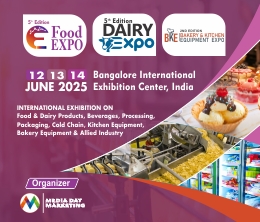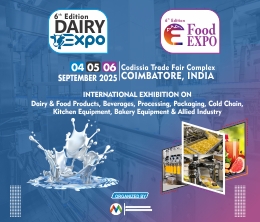Sri Lanka Ready to Eat Food Market (2025-2031) | Revenue, Size, Share, Growth, Industry, Outlook, Forecast, Analysis, Trends, Value & Segmentation
Market Forecast By Product Types (Instant Breakfast/Cereals, Instant Soups and Snacks, Ready Meals , Baked Goods, Meat Products & Others), By Distribution Channels (Hypermarkets/Supermarkets, Online Retail Stores , Convenience Stores & Others) and competitive landscape
| Product Code: ETC003358 | Publication Date: Nov 2022 | Updated Date: Mar 2025 | Product Type: Report | |
| Publisher: 6Wresearch | No. of Pages: 70 | No. of Figures: 35 | No. of Tables: 5 | |
Sri Lanka Ready To Eat Food Market Competition 2023
Sri Lanka Ready To Eat Food market currently, in 2023, has witnessed an HHI of 2468, Which has increased slightly as compared to the HHI of 1923 in 2017. The market is moving towards moderately competitive. Herfindahl index measures the competitiveness of exporting countries. The range lies from 0 to 10000, where a lower index number represents a larger number of players or exporting countries in the market while a large index number means fewer numbers of players or countries exporting in the market.
Sri Lanka Export Potential Assessment For Ready to Eat Food Market (Values in USD Thousand)
Sri Lanka Ready to Eat Food Market Highlights
| Report Name | Sri Lanka Ready to Eat Food Market |
| Forecast period | 2025-2031 |
| CAGR | 6.3% |
| Growing Sector | Frozen Food |
Topics Covered in the Sri Lanka Ready To Eat Food Market Report
Sri Lanka Ready To Eat Food Market report thoroughly covers the market By Product, By Distribution Channels. The market report provides an unbiased and detailed analysis of the ongoing market trends, opportunities/high growth areas, and market drivers which would help the stakeholders to devise and align their market strategies according to the current and future market dynamics.
Sri Lanka Ready To Eat Food Market Synopsis
Sri Lanka Ready To Eat Food Market is witnessing gradual growth driven by a shift in consumer preferences towards convenience, especially in urban areas. As busy lifestyles become more common, there is a rising demand for ready-to-eat meals that offer quick preparation and variety. The market is characterized by the growing popularity of frozen meals, instant foods, and pre-packaged options, with an increasing focus on convenience and shelf life.
Alongside this, the market is also seeing a rise in demand for healthier alternatives, with manufacturers introducing more nutritious and diverse meal options. Factors such as the expansion of retail outlets, online grocery shopping, and evolving consumer tastes further contribute to the market’s growth. However, challenges like inflation and fluctuations in raw material prices remain a concern for the sector. Overall, the market is poised for steady expansion as Sri Lankans embrace more time-efficient meal solutions.
According to 6Wresearch, the Sri Lanka Ready To Eat Food Market is anticipated to grow at a CAGR of 6.3% during the forecast period 2025-2031. The growth of Sri Lanka’s Ready To Eat (RTE) food market is fuelled by several key factors. The increasing urbanization and busy lifestyles, particularly among working professionals and younger consumers, have led to a higher demand for convenient meal solutions. Additionally, the rise in disposable incomes and changes in eating habits have contributed to the growing popularity of ready-to-eat and frozen meals. The convenience, longer shelf life, and diverse options offered by RTE products further enhance their appeal. Health-conscious consumers are also driving demand for nutritious, low-calorie, and organic meal options, encouraging manufacturers to innovate and cater to these needs.
However, the market faces challenges such as inflation and fluctuations in raw material prices, which can impact production costs and pricing strategies. Additionally, supply chain disruptions and the reliance on imported ingredients may pose difficulties in maintaining consistent product quality and availability. Moreover, competition from local food vendors and traditional meal options presents another hurdle, as some consumers still prefer freshly prepared, home-cooked meals over processed RTE products. Despite these challenges, the market’s growth trajectory remains positive, supported by the rising demand for convenience and evolving consumer preferences.
Sri Lanka Ready To Eat Food Market Trends
Sri Lanka Ready To Eat Food Market is witnessing several notable trends, driven by changing consumer preferences and evolving lifestyles. One of the key trends is the growing demand for convenience, with more consumers opting for ready-to-eat meals that save time and effort, especially among busy professionals and urban dwellers. The rise in online grocery shopping and food delivery services has also contributed to the Sri Lanka Ready To Eat Food Market Growth, allowing consumers easy access to a wide variety of meals.
Health-conscious choices are another significant trend, with increasing demand for healthier, low-calorie, and organic meal options. This has prompted manufacturers to diversify their product offerings to cater to specific dietary needs such as gluten-free, vegan, or protein-rich meals. Additionally, innovation in packaging has become a trend, with a focus on eco-friendly and sustainable packaging solutions, responding to the growing concern over environmental impact. Frozen foods, ready-to-cook meals, and ethnic cuisine options are also gaining popularity, offering consumers a wide range of flavours and meal types. Overall, these trends indicate a dynamic shift towards convenience, health, and sustainability in the Sri Lanka RTE food market.
Investment Opportunities in the Sri Lanka Ready To Eat Food Market
Sri Lanka Ready To Eat Food Industry presents several promising investment opportunities, driven by changing consumer demands and growing market potential. One key area for investment is the frozen food segment, which continues to expand as consumers seek convenient, long-shelf-life meal options. Additionally, the growing trend towards healthier eating creates opportunities for investment in nutritious RTE meals, including organic, gluten-free, and plant-based options. Companies that focus on innovation and cater to specific dietary preferences, such as vegan or low-calorie meals, are likely to find a strong market presence.
With the rise of e-commerce and online grocery platforms, investing in the digital distribution of RTE products offers a promising growth avenue. Establishing online food delivery partnerships or expanding direct-to-consumer channels could provide a competitive edge in the increasingly digital market. Moreover, investments in sustainable packaging and eco-friendly solutions are becoming increasingly valuable, as consumers and businesses place a greater emphasis on environmental responsibility. Overall, with a growing consumer base and a shifting demand for convenience, health, and sustainability, the Sri Lankan RTE food market offers a wide range of investment opportunities for forward-thinking companies and investors.
Leading Players in the Sri Lanka Ready To Eat Food Market
The Sri Lanka Ready To Eat (RTE) food market features a mix of local and international players who are contributing to the growth of the sector. Leading local brands such as Cargills and Keells have a strong presence in the market, offering a variety of frozen and ready-to-eat meal options tailored to local tastes. Cargills Food City has been expanding its frozen food offerings and is well-known for its wide distribution network. Keells also plays a significant role, offering convenient food products that are widely accessible through their retail outlets and online platforms.
International brands, such as Nestlé and Unilever, are also key players in the Sri Lankan market. These global companies have a strong foothold due to their established brands and innovative product offerings. Nestlé, for instance, has capitalized on the demand for nutritious and ready-to-eat meals, while Unilever has tapped into the demand for convenient food options, particularly with their range of instant noodles and frozen foods. Additionally, emerging players and local startups focusing on organic, healthy, and ready-to-cook meal solutions are also contributing to the market's growth, further intensifying competition and driving product innovation.
Government Regulations
The Sri Lankan government plays a crucial role in regulating the Ready To Eat (RTE) food market to ensure food safety, quality, and consumer protection. The Sri Lanka Standards Institution (SLSI) is responsible for setting national food safety standards and guidelines for RTE products, ensuring they meet hygiene, nutritional, and labelling requirements. The Food Control Administration Unit under the Ministry of Health enforces regulations on food safety, especially concerning the handling, processing, and packaging of RTE food products. Additionally, RTE food producers must comply with the Consumer Affairs Authority (CAA), which regulates fair trade practices, preventing misleading claims and ensuring the safety of food products sold to consumers.
Moreover, as global concerns about sustainability grow, the government is increasingly promoting eco-friendly practices within the food industry, which includes the use of sustainable packaging and reducing food waste. Export regulations also play a key role in shaping the industry, as Sri Lanka is a significant exporter of processed food products, and adherence to international food safety and quality standards is crucial for maintaining export potential. Overall, government regulations in Sri Lanka's RTE food market are aimed at ensuring the safety, quality, and sustainability of food products, thereby fostering consumer trust and encouraging market growth.
Future Insights of the Sri Lanka Ready To Eat Food Market
The future of the Sri Lanka Ready To Eat (RTE) food market looks promising, with several factors expected to drive continued growth and innovation. As urbanization and busy lifestyles continue to shape consumer behaviour, the demand for convenient meal solutions is expected to rise. The market is likely to see further diversification in product offerings, including a stronger focus on healthier, organic, and specialty meal options, such as gluten-free, vegan, and low-calorie foods, in response to the growing health-conscious consumer base. Additionally, the adoption of technology in food distribution, including e-commerce platforms and online food delivery services, is expected to further expand the reach of RTE products, making them more accessible to a wider audience.
Market Segmentation Analysis
The report offers a comprehensive study of the subsequent market segments and their leading categories.
Ready Meals to Dominate the Market-By Product
According to Parth, Senior Research Analyst,6Wresearch, the Ready Meals is experiencing the most significant growth. As urbanization increases and consumers seek more convenient food options, the demand for ready-to-eat meals has surged, particularly among busy professionals and younger populations. Ready meals offer a diverse range of choices, including local and international cuisines, catering to the evolving tastes of consumers.
Online retail stores to Dominate the Market-By Distribution Channels
The Online Retail Stores is experiencing the most growth. The rise in e-commerce and the increasing adoption of online shopping have made it easier for consumers to access a wide range of RTE products, especially in urban areas where convenience is a top priority. The growing popularity of online food delivery services and the expansion of grocery delivery platforms have also boosted the demand for RTE meals and snacks.
Key Attractiveness of the Report
- 10 Years of Market Numbers.
- Historical Data Starting from 2021 to 2024.
- Base Year: 2024
- Forecast Data until 2031.
- Key Performance Indicators Impacting the market.
- Major Upcoming Developments and Projects.
Key Highlights of the Report:
- Sri Lanka Ready To Eat Food Market Outlook
- Market Size of Sri Lanka To Eat Food Market, 2024
- Forecast of Sri Lanka Ready To Eat Food Market, 2031
- Historical Data and Forecast of Sri Lanka Ready To Eat Food Revenues & Volume for the Period 2021 - 2031
- Sri Lanka Ready To Eat Food Trend Evolution
- Sri Lanka Ready To Eat Food Market Drivers and Challenges
- Sri Lanka Ready To Eat Food Price Trends
- Sri Lanka Ready To Eat Food Porter's Five Forces
- Sri Lanka Ready To Eat Food Industry Life Cycle
- Historical Data and Forecast of Sri Lanka Ready To Eat Food Market Revenues & Volume By Product for the Period 2021 - 2031
- Historical Data and Forecast of Sri Lanka Ready To Eat Food Market Revenues & Volume By Instant Breakfast/Cereals for the Period 2021 - 2031
- Historical Data and Forecast of Sri Lanka Ready To Eat Food Market Revenues & Volume By Instant Soups and Snacks for the Period 2021 - 2031
- Historical Data and Forecast of Sri Lanka Ready To Eat Food Market Revenues & Volume By Ready Meals for the Period 2021 - 2031
- Historical Data and Forecast of Sri Lanka Ready To Eat Food Market Revenues & Volume By Baked Products for the Period 2021 - 2031
- Historical Data and Forecast of Sri Lanka Ready To Eat Food Market Revenues & Volume By Meat Products for the Period 2021 - 2031
- Historical Data and Forecast of Sri Lanka Ready To Eat Food Market Revenues & Volume By Others for the Period 2021 -2031
- Historical Data and Forecast of Sri Lanka Ready To Eat Food Market Revenues & Volume By Distribution Channels for the Period 2021 - 2031
- Historical Data and Forecast of Sri Lanka Ready To Eat Food Market Revenues & Volume By Hypermarkets/Supermarkets for the Period 2021 - 2031
- Historical Data and Forecast of Sri Lanka Ready To Eat Food Market Revenues & Volume By Online Retail Stores for the Period 2021 – 2031
- Historical Data and Forecast of Sri Lanka Ready To Eat Food Market Revenues & Volume By Convenience Stores for the Period 2021 - 2031
- Historical Data and Forecast of Sri Lanka Ready To Eat Food Market Revenues & Volume By Others for the Period 2021 - 2031
- Sri Lanka Ready To Eat Food Import Export Trade Statistics
- Market Opportunity Assessment By Product
- Market Opportunity Assessment By Distribution Channels
- Sri Lanka Ready To Eat Food Top Companies Market Share
- Sri Lanka Ready To Eat Food Competitive Benchmarking By Technical and Operational Parameters
- Sri Lanka Ready To Eat Food Company Profiles
- Sri Lanka Ready To Eat Food Key Strategic Recommendations
Markets Covered
The report provides a detailed analysis of the following market segments:
By Product
- Instant Breakfast/Cereals
- Instant Soups and Snacks
- Ready Meals
- Baked Products
- Meat Products
- Others
By Distribution Channels
- Hypermarkets/Supermarkets
- Online Retail Stores
- Convenience Stores
- Others
Sri Lanka Ready to Eat Food Market (2025-2031): FAQs
| 1. Executive Summary |
| 2. Introduction |
| 2.1. Report Description |
| 2.2. Key Highlights of The Report |
| 2.3. Market Scope & Segmentation |
| 2.4. Research Methodology |
| 2.5. Assumptions |
| 3. Sri Lanka Ready to Eat Food Market Overview |
| 3.1. Sri Lanka Ready to Eat Food Market Revenues, 2021-2031F |
| 3.2. Sri Lanka Ready to Eat Food Market Revenue Share, By Product Types, 2021 & 2031F |
| 3.3. Sri Lanka Ready to Eat Food Market Revenue Share, By Distribution Channels, 2021 & 2031F |
| 3.4. Sri Lanka Ready to Eat Food Market Revenue Share, By Countries, 2021 & 2031F |
| 3.5. Sri Lanka Ready to Eat Food Market IndSri Lankatry Life Cycle |
| 3.6. Sri Lanka Ready to Eat Food Market- Porter’s Five Forces |
| 4. Sri Lanka Ready to Eat Food Market Dynamics |
| 4.1. Impact Analysis |
| 4.2. Market Drivers |
| 4.3. Market Restraints |
| 5. Sri Lanka Ready to Eat Food Market Trends |
| 6. Sri Lanka Ready to Eat Food Market Overview, By Product Types |
| 6.1. Sri Lanka Ready to Eat Food Market Revenues, By Instant Breakfast/Cereals, 2021-2031F |
| 6.2. Sri Lanka Ready to Eat Food Market Revenues, By Instant Soups and Snacks, 2021-2031F |
| 6.3. Sri Lanka Ready to Eat Food Market Revenues, By Ready Meals, 2021-2031F |
| 6.4. Sri Lanka Ready to Eat Food Market Revenues, By Baked Goods, 2021-2031F |
| 6.5. Sri Lanka Ready to Eat Food Market Revenues, By Others, 2021-2031F |
| 6.6. Sri Lanka Ready to Eat Food Market Revenues, By Meat Products, 2021-2031F |
| 7. Sri Lanka Ready to Eat Food Market Overview, By Distribution Channels |
| 7.1. Sri Lanka Ready to Eat Food Market Revenues, By Online Retailers, 2021-2031F |
| 7.2. Sri Lanka Ready to Eat Food Market Revenues, By Convinieince Stores, 2021-2031F |
| 7.3. Sri Lanka Ready to Eat Food Market Revenues, By Hypermarkets/Supermarkets, 2021-2031F |
| 7.4. Sri Lanka Ready to Eat Food Market Revenues, By Others, 2021-2031F |
| 8. Sri Lanka Ready to Eat Food Market Overview, By Region |
| 8.1. Sri Lanka Ready to Eat Food Market Revenues, By Region, 2021-2031F |
| 8.2. Sri Lanka Ready to Eat Food Market Volume, By Region, 2021-2031F |
| 9. Sri Lanka Ready to Eat Food Market Key Performance Indicators |
| 10. Sri Lanka Ready to Eat Food Market Opportunity Assessment |
| 10.1. Sri Lanka Ready to Eat Food Market, Opportunity Assessment, By Product Types, 2031F |
| 10.2. Sri Lanka Ready to Eat Food Market, Opportunity Assessment, By Region, 2031F |
| 11. Sri Lanka Ready to Eat Food Market Competitive Landscape |
| 11.1. Sri Lanka Ready to Eat Food Market Competitive Benchmarking, By Product |
| 11.2. Sri Lanka Ready to Eat Food Market Revenue Share, By Company, 2024 |
| 12. Company Profiles |
| 13. Key Strategic Recommendations |
| 14. Disclaimer |
Market Forecast By Product Types (Instant Breakfast/Cereals, Instant Soups and Snacks, Ready Meals , Baked Goods, Meat Products & Others), By Distribution Channels (Hypermarkets/Supermarkets, Online Retail Stores , Convenience Stores & Others) and competitive landscape
| Product Code: ETC003358 | Publication Date: Aug 2020 | Product Type: Report | |
| Publisher: 6Wresearch | No. of Pages: 70 | No. of Figures: 35 | No. of Tables: 5 |
Sri Lanka Ready to Eat Food market is expected to witness potential growth throughout the forecast period 2020-26F backed by various innovations in the ready to eat food stuffs such as increased shelf life and less use of preservatives, increased preferences towards more manpower-lean cooking formats and greater variety of the products available at affordable costs. Also, the enhancement in the taste of ready to eat food stuffs is taking over the consumer interest and leading to an increased demand for the ready to eat food stuffs in Sri Lanka and is expected to trigger healthy growth of the Sri Lanka ready to eat food market in the upcoming six years.
According to 6Wresearch, Sri Lanka Ready to Eat Food Market is anticipated to witness growth during the forecast period 2020-26F. The spread of COVID-19 is anticipated to spur the sales Ready to Eat Food across Sri Lanka owing to rising involvement of the natives towards procurement of dry food on the back of hygiene concerns. However, a spur in the rapid demand for packed foods as compared to short supply owing to complete lockdown and suspension of the production activities which is anticipated to hinder the growth of the Sri Lanka Ready to Eat Food market during the year 2020. However, since the COVID spread would take time to slowdown, increased hygiene concerns in the later part of 2020 and beginning of 2021 would offer lucrative growth opportunities to the Sri Lanka Ready to Eat Food market in the coming years.
On the basis of product types, ready to eat cereals are expected to register the highest growth in the upcoming six years owing to increasing demand for exotic and health aid cereals in the country. Increased shelf-life of the ready to eat foods along with sustaining the food quality and tastes through metal containers are further, some of the factors which are expected to benefit the growth of the Sri Lanka ready to eat food market in the near future. Moreover, an increase in the participation of women in workforce along with rapid urbanization and increased per capita spending is expected to contribute towards significant demand for ready to eat food in the country in the coming years.
The Sri Lanka Ready to Eat Food report thoroughly covers the market by Product Types and by Distribution Channels. Sri Lanka Ready to Eat Food outlook report provides an unbiased and detailed analysis of the on-going Sri Lanka Ready to Eat Food trends, opportunities/high growth areas and market drivers which would help the stakeholders to devise and align their market strategies according to the current and future market dynamics.
Key Highlights of the Report:
- Sri Lanka Ready to Eat Food Market Overview
- Sri Lanka Ready to Eat Food Market Outlook
- Sri Lanka Ready to Eat Food Market Forecast
- Sri Lanka Ready to Eat Food Market Size and Sri Lanka Ready to Eat Food Market Forecast until 2025
- Sri Lanka Ready to Eat Food Market Share, By Types
- Sri Lanka Ready to Eat Food Market Share, By Product
- Sri Lanka Ready to Eat Food Market Share, By Distribution Channels
- Sri Lanka Ready to Eat Food Market Share, By Region
- Historical Data of Sri Lanka Ready to Eat Food Market Revenues and Volume for the period, 2015-2018
- Market size and Forecast of Sri Lanka Ready to Eat Food Market Revenues and Volume until 2025
- Historical Data of Sri Lanka Ready to Eat Food Market Revenues and Volume, By Product Types, for the Period 2015-2018
- Market size and Forecast of Sri Lanka Ready to Eat Food Market Revenues and Volume, By Product Types, until 2025
- Historical Data of Sri Lanka Ready to Eat Food Market Revenues and Volume, By Distribution Channels, for the Period 2015-2018
- Market size and Forecast of Sri Lanka Ready to Eat Food Market Revenues and Volume, By Distribution Channels, until 2025
- Historical Data of Sri Lanka Ready to Eat Food Market Revenues and Volume, By Region, for the Period 2015-2018
- Market size and Forecast of Sri Lanka Ready to Eat Food Market Revenues and Volume, By Region, until 2025
- Sri Lanka Ready to Eat Food Market Drivers and Restraints
- Sri Lanka Ready to Eat Food Market Trends and Industry Life Cycle
- Porter’s Five Force Analysis
- Sri Lanka Ready to Eat Food Market Opportunity Assessment
- Sri Lanka Ready to Eat Food Market Revenue Share, By Company
- Sri Lanka Ready to Eat Food Market Overview on Competitive Benchmarking
- Company Profiles
- Key Strategic Recommendations
Markets Covered
The Sri Lanka Ready to Eat Food Market report provides a detailed analysis of the following market segments:
- By Product
- Instant Breakfast/Cereals
- Instant Soups and Snacks
- Ready Meals
- Baked Products
- Meat Products
- Others
- By Distribution Channels:
- Hypermarkets/Supermarkets
- Online Retail Stores
- Convenience Stores
- Others
- Single User License$ 1,995
- Department License$ 2,400
- Site License$ 3,120
- Global License$ 3,795
Search
Related Reports
- Middle East OLED Market (2025-2031) | Outlook, Forecast, Revenue, Growth, Companies, Analysis, Industry, Share, Trends, Value & Size
- Iran Portable Fire Extinguisher Market (2025-2031) | Value, Forecast, Companies, Industry, Analysis, Trends, Growth, Revenue, Size & Share
- Philippines Animal Feed Market (2025-2031) | Companies, industry, Size, Share, Revenue, Analysis, Forecast, Growth, Outlook
- India Lingerie Market (2025-2031) | Companies, Growth, Forecast, Outlook, Size, Value, Revenue, Share, Trends, Analysis & Industry
- India Smoke Detector Market (2025-2031) | Trends, Share, Analysis, Revenue, Companies, Industry, Forecast, Size, Growth & Value
- Kenya Road Stabilization Equipment Market (2025-2031) | Industry, Size, Growth, Revenue, Value, Companies, Forecast, Analysis, Share & Trends
- North America Sodium chloride Market (2025-2031) | Analysis, Revenue, Forecast, Trends, Companies, Size, Growth, Share, Industry, Outlook & Value
- North America Vinyl Flooring Market (2025-2031) | Value, Growth,Size, Analysis, Revenue, Industry, Forecast, Share, Outlook, Companies & Trends
- Tajikistan Thermal Camera Market (2025-2031) | Trends, Size, Growth, Share, Industry, Companies, Value, Analysis, Revenue, Forecast & Outlook
- Singapore Professional AV Market (2025-2031) | Industry, Size, Growth, Revenue, Value, Companies, Forecast, Analysis, Share & Trends
Industry Events and Analyst Meet
Our Clients
Whitepaper
- Middle East & Africa Commercial Security Market Click here to view more.
- Middle East & Africa Fire Safety Systems & Equipment Market Click here to view more.
- GCC Drone Market Click here to view more.
- Middle East Lighting Fixture Market Click here to view more.
- GCC Physical & Perimeter Security Market Click here to view more.
6WResearch In News
- Doha a strategic location for EV manufacturing hub: IPA Qatar
- Demand for luxury TVs surging in the GCC, says Samsung
- Empowering Growth: The Thriving Journey of Bangladesh’s Cable Industry
- Demand for luxury TVs surging in the GCC, says Samsung
- Video call with a traditional healer? Once unthinkable, it’s now common in South Africa
- Intelligent Buildings To Smooth GCC’s Path To Net Zero













